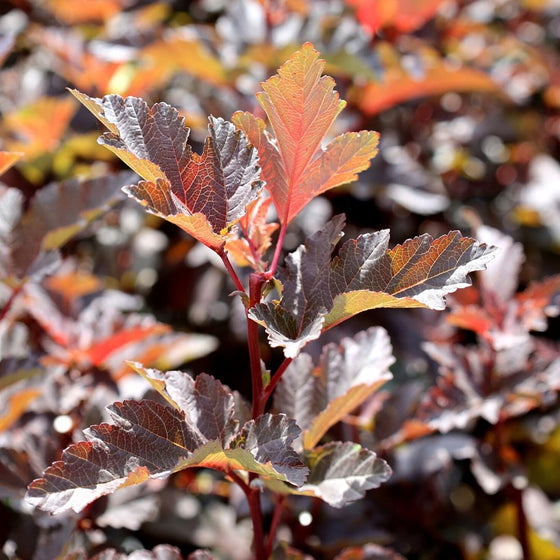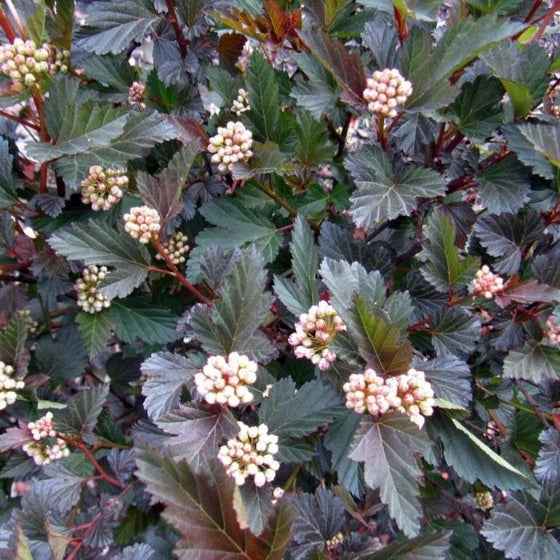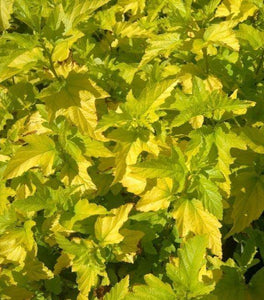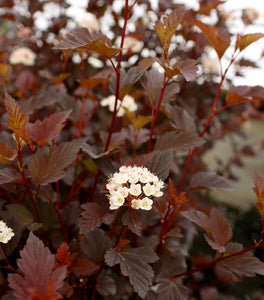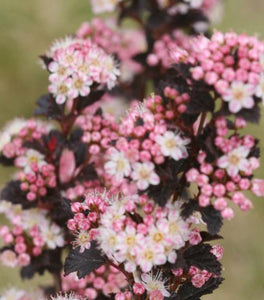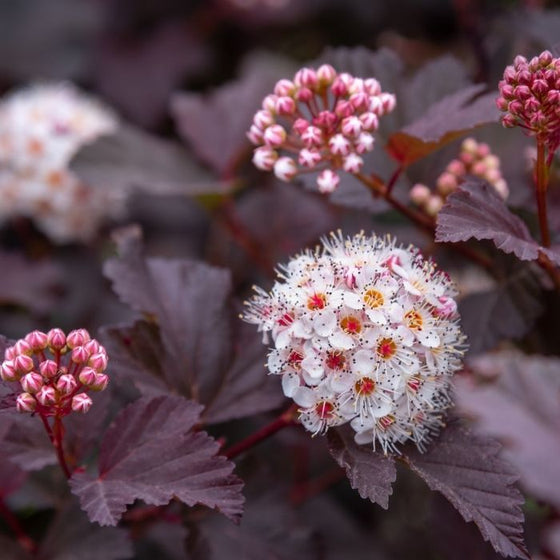
Images Depict Mature Plants
Diablo Ninebark Shrubs for Sale Online
Physocarpus Diablo Ninebark Shrub is a purple-leaved ninebark cultivar. It is an upright, deciduous North American Native shrub.
The Diablo is an upright, spreading, somewhat coarse, deciduous shrub that is closely related to the genus Spiraea. It typically grows to be 4-8 feet tall. Small pinkish-white, five-petaled flowers are dense, flat, rounded, and 1-2" in diameter. Flowers appear in late spring and give way to drooping clusters of reddish fruit.
The shrub's purple foliage tends to green up in hot summer climates as the summer progresses. The species is native to Missouri. Ninebark is named for its exfoliating bark, which peels in strips to reveal several layers of reddish to light brown inner bark.
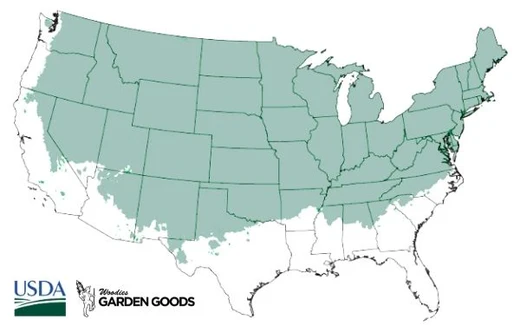
| Hardiness Zone: | 3-7 |
|---|---|
| Mature Height: | 4 to 8 feet |
| Mature Width: | 4 to 8 feet |
| Classification: | Broad Leaved deciduous shrub, Late Spring to Summer flowering |
| Sunlight: | Full Sun to part sun |
| Habit: | Upright, spreading, densely branched |
| Flower Color: | Pinkish White flowers in summer turning to reddish fruit. |
| Foliage: | Purple to shades of Dark Green |
| Pruning Season: | Late Winter to Early spring, promotes increased branching and more flowers. |
| Soil Condition: | Any well drained soil |
| Water Requirements: | Water well until established. |
| Uses: | Extremely attractive when used as a focal point in the mixed border, mass planting, or a specimen planting. Provides nectar sources for pollinators. Great winter interest due to the peeling bark. |
How to Care for Diablo Ninebark
Be sure to read our planting instructions to ensure a healthy and happy plant for years to come!
Additional Information
History and introduction of Physocarpus Diablo:
Physocarpus Diablo was discovered in June, 1986 in Ellerbek, Kchleswig-Holstein, near Hamburg, Germany by Kordes Gunter and Hans Schadendorf. Among a field of 120,000 other seedlings, this particular plant was noted for its remarkable red foliage in contrast to the large field planting of all typically green foliaged plants. The new plant was reproduced by cuttings at Kordes Jungpflanzen in Germany and subsequently at Monrovia Nursery in Azusa California. The common name of Ninebark comes from the appearance of the bark which is peels away in layers. The inner bark was brewed into a pain reliever and remedy for many other maladies by Native American tribes within this plant's range. The roots of Diablo Ninebark Shrubs were sometimes steam cooked and eaten and plants were used as charms to cause bad luck.

